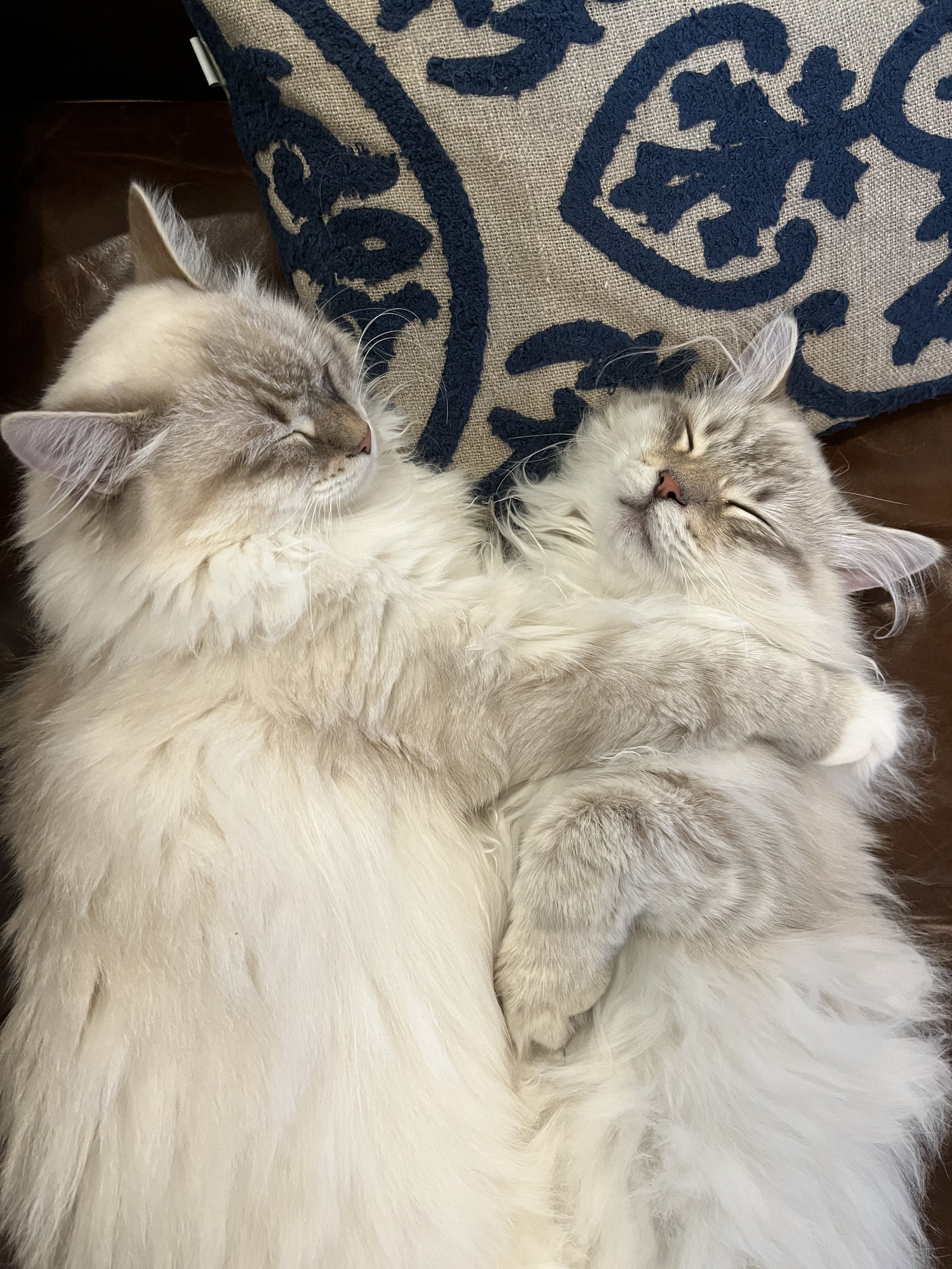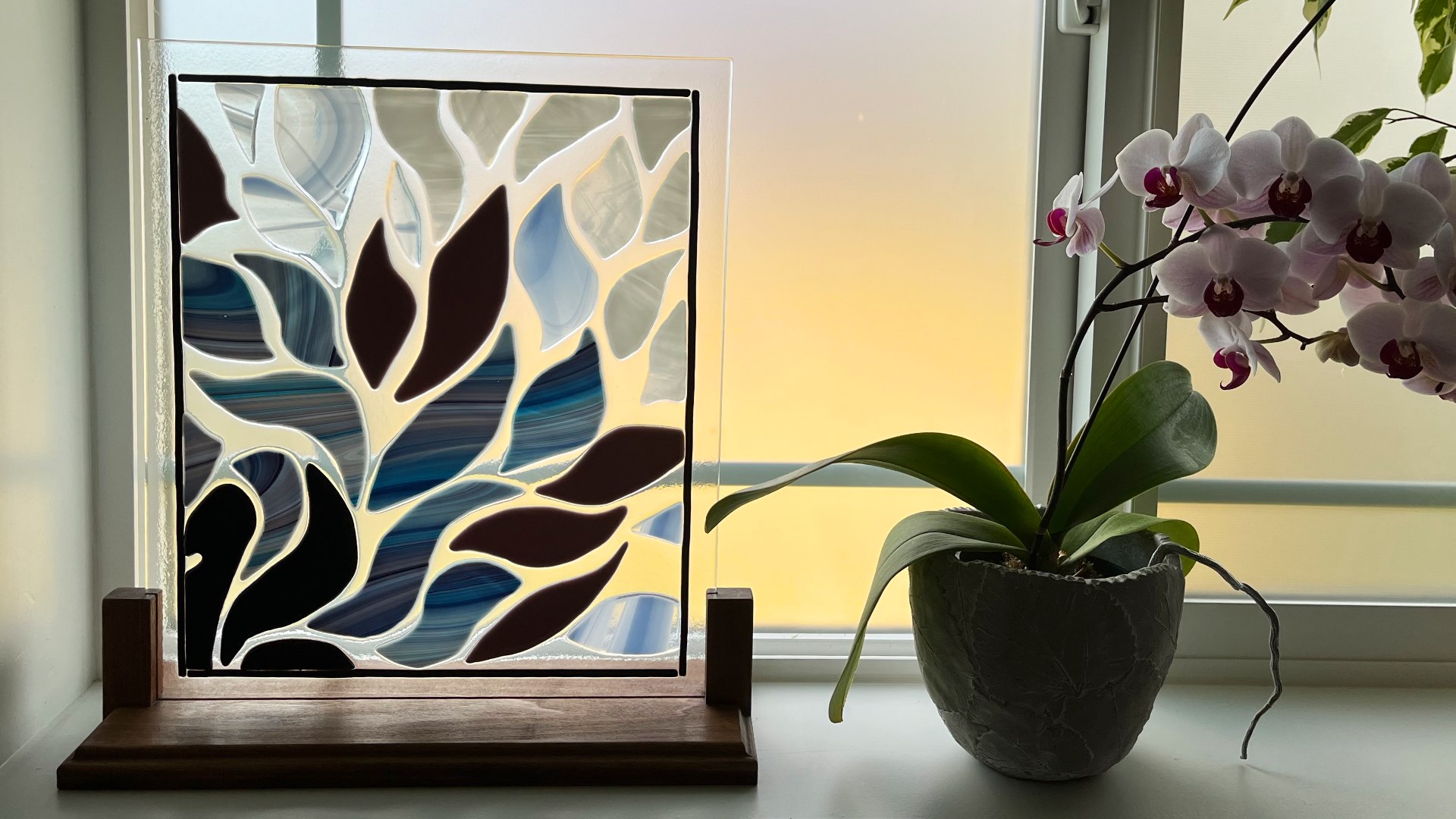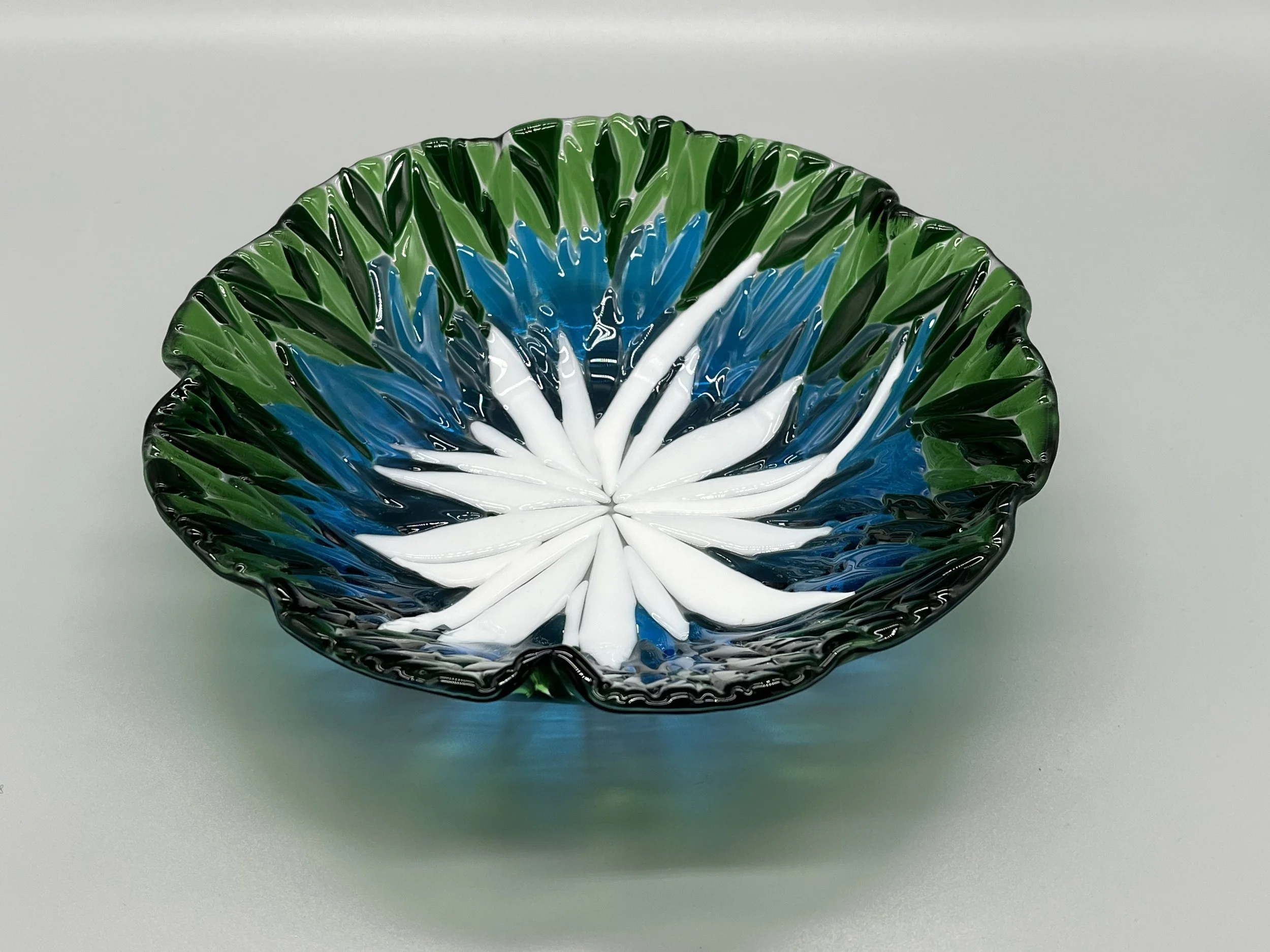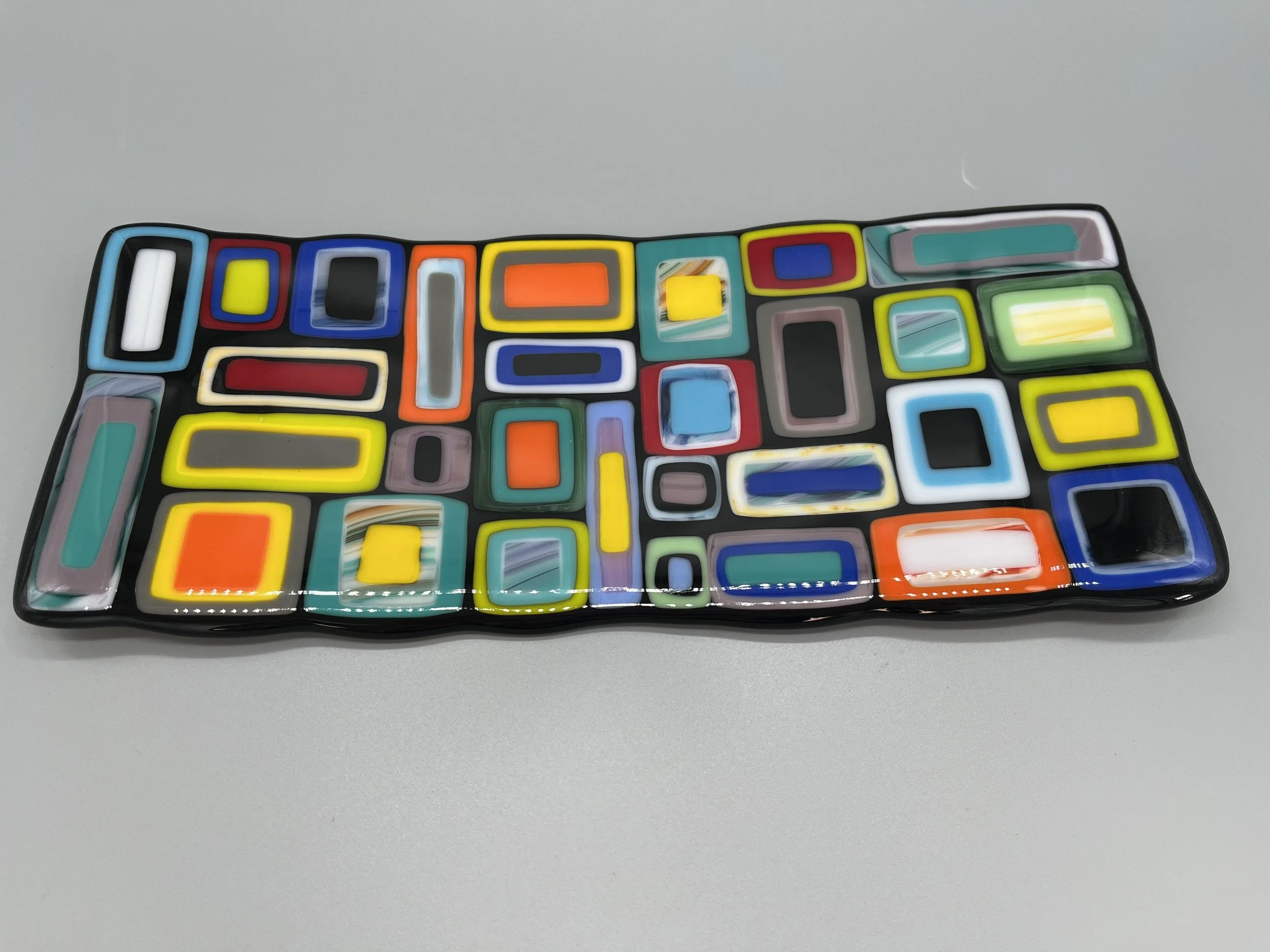About Me and My Work
“A finance professional by trade, I am no stranger to precision and accuracy. In my pieces I aim to balance the joy of creativity with the precision of craftsmanship.”
Inspired by Joanie
You often hear stories of when there was a moment, a conversation, or an event that was so impactful it resulted in a lasting change in someone’s life.
I had such an experience when I walked into Joanie Schwartz Glass Studio, (now MoonWater Arts).
For a while, I had been trying to sign up for Joanie’s classes but they were always sold out. As an act of desperation (or chutzpah, I wasn’t sure which way Joanie would interpret it), I literally begged her to create another glass fusing lantern class. To my surprise (and delight), she agreed. Since then, with Joanie’s endless patience, support, and guidance, I discovered a passion for fused glass art. More importantly, I developed a friendship that will last the rest of my days.
I am grateful for my friend who unconditionally shares her knowledge, always makes me laugh, and supports my growing glass obsession.
Inspired by my ‘Girl Pack’
In this crazy life journey I’ve had the great fortune to build and maintain friendships with some of the most creative, intelligent, force-of-nature women I’ve ever met. My early days Alaska Girl Pack plus more recent additions from the Washington Edition Pack have been, and continue to be, instrumental in my life. You all know who you are and this world is infinitely better with you in it.
Inspired by Nature
My home and glass studio are on Fidalgo Island in Anacortes, Washington. Not only is the island a wonderful place to live, but the wild places that surround it often inspire my artwork. As you browse my work, you will probably notice these influences in both form and color.
Prior to moving to the Pacific Northwest, I spent over a decade in Alaska adventuring throughout the state. I love the water and enjoy any opportunity to be out on a boat or swimming (in warmer tropical waters).
When not working my 9-to-5 job, you can find me doing some activity in and around the Anacortes area. I also love working in my studio, reading, enjoying good music, good wine, good food, and good friends and family. And almost all of this is managed by my Siberian cats, Jaxon and Jinx, who never sleep on the job.
About Glass Fusing
Fusing glass is a process of joining/bonding glass pieces together in a kiln at high temperatures. Fused glass is also referred to as “kilnforming”, “warm glass” or “kiln-glass”. There are many fusing methods and design techniques, some of the more frequent include tack-fusing, full fuse, slumping, and draping.
Tack-fusing is a technique where separate pieces of glass are heated to a temperature until they are just hot enough to stick together without losing their individual characteristics.
Full fuse is when the glass is heated until it becomes molten and the pieces merge together.
Glass slumping is a process that uses heat to liquify the glass enough to settle into a concave mold. Slumping is often used for creating bowls, platters and art glass.
Glass draping is similar to glass slumping, but the glass is shaped over a mold. Draping is a popular technique for vases, votives and projects with a more whimsical flair.
FAQs
How is kiln-glass different from glass blowing? Glass blowing creates shapes by blowing air through a special tool called a blowpipe into a ball of molten glass and is typically used for large pieces of art and functional vases, bowls, and sinks.
How is stained glass different from kiln-glass? Stained glass is held together with strips of lead, zinc, brass copper, or lead ores versus being fused together. Stained glass is not tested compatible for fusing. However, nearly any tested compatible glass for fusing can be used for stained glass.
What is the temperature used to fuse the glass? Typically between 1000 – 1700”F / 538 – 927”C; however, within this range depends on the type of fuse you are doing (e.g. tack, full, slump, drape) and how many layers of glass.
Is the glass dishwasher safe? It is not recommended to put your fused glass piece in either a dishwasher or a microwave.
How long does it take to fuse glass? This depends on the size and thickness of the project. Small projects may only take 3-4 hours to fuse while larger projects could take up to 14 hours. There is also a cooling process as glass must be cooled slowly to relieve stress that builds during the firing process. The entire fusing and cooling process is often 24 hours or more.






